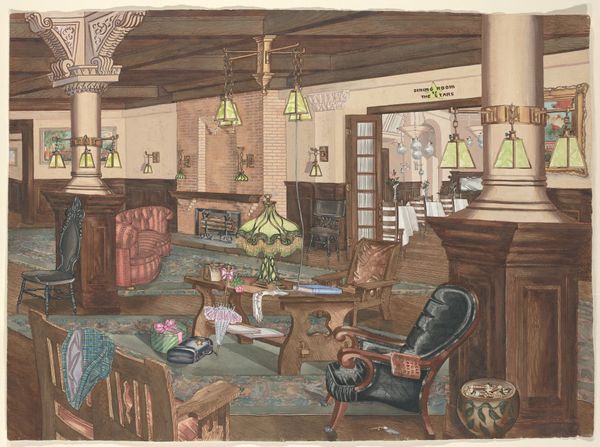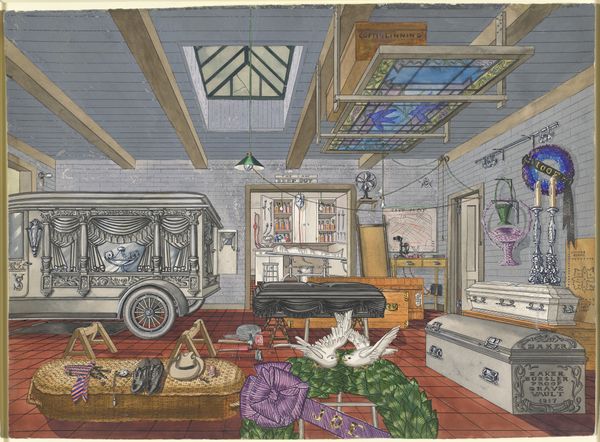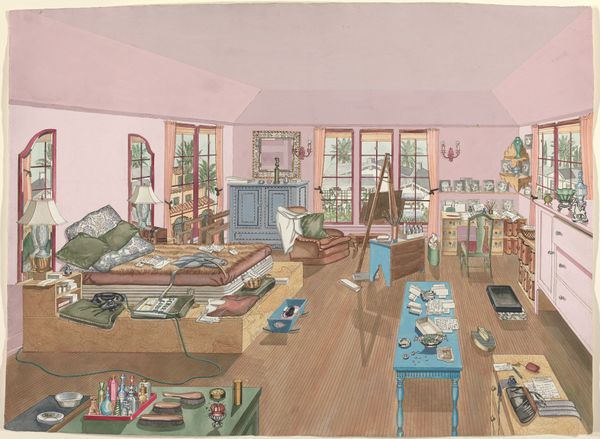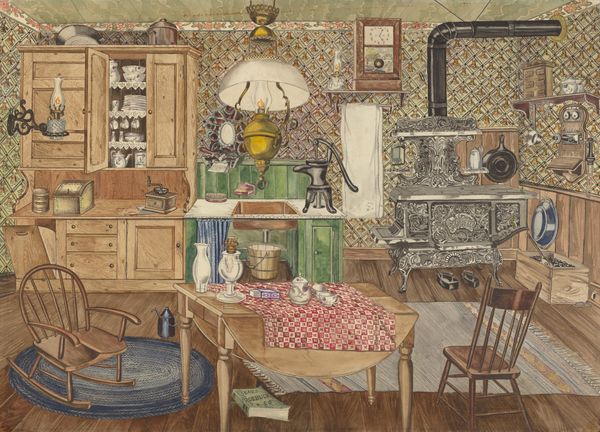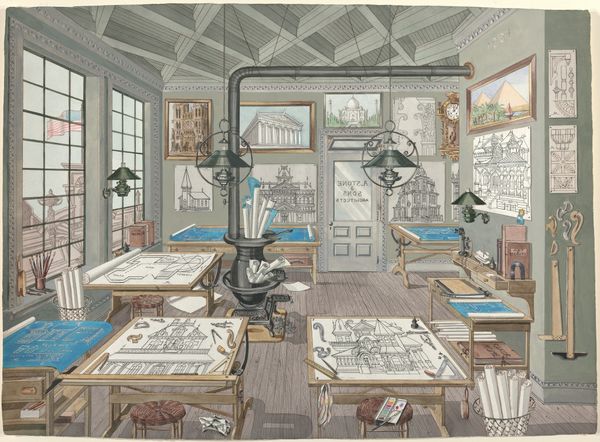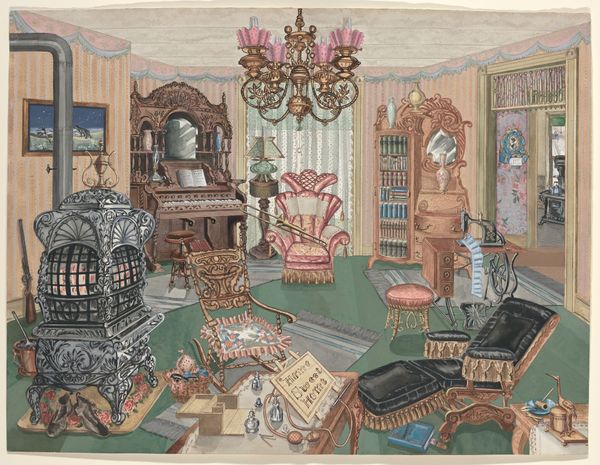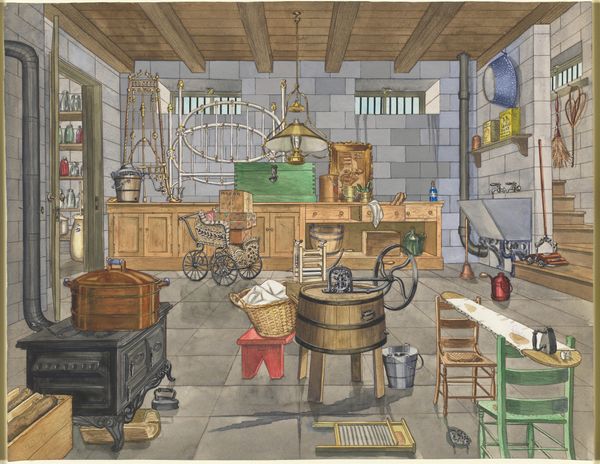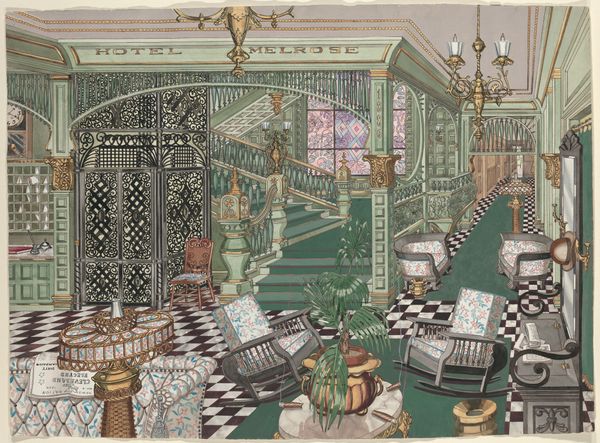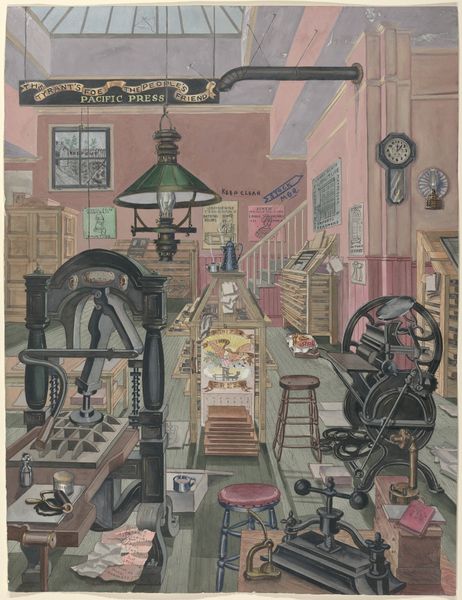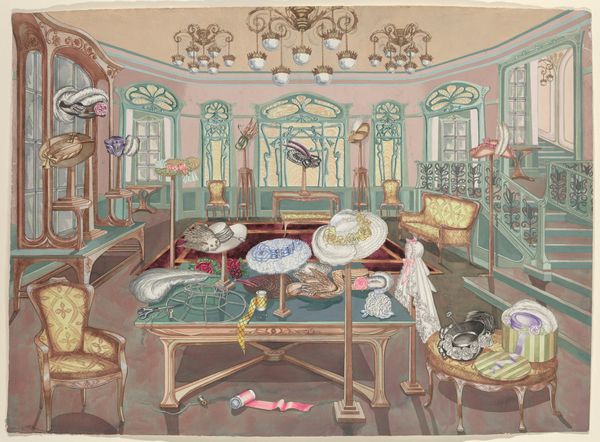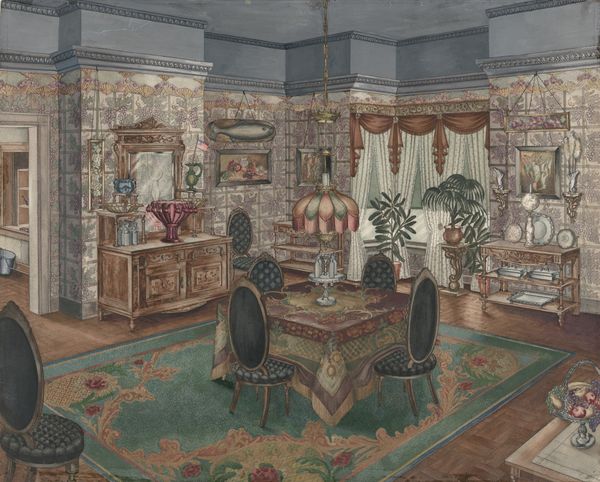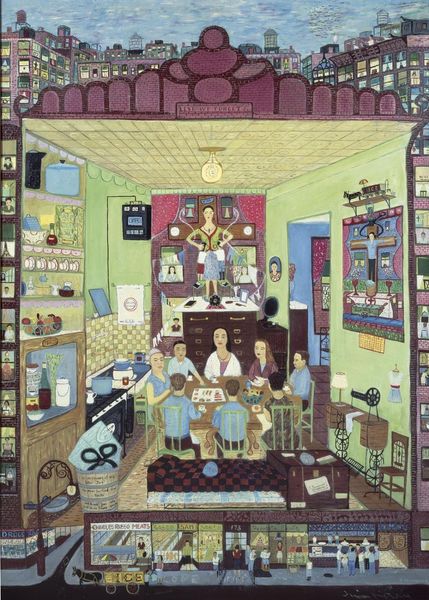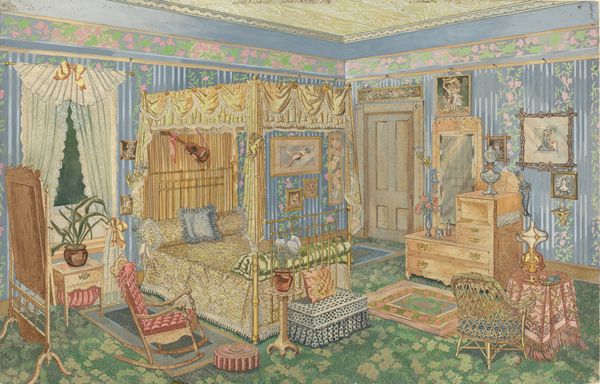
drawing, watercolor
#
drawing
#
landscape
#
watercolor
#
watercolour illustration
#
genre-painting
#
decorative-art
#
modernism
Dimensions: overall: 56.5 x 77.8 cm (22 1/4 x 30 5/8 in.)
Copyright: National Gallery of Art: CC0 1.0
Curator: Perkins Harnly’s watercolor and ink drawing, “California Mission Style” Interior, completed in 1946, presents a detailed, almost obsessive depiction of domestic space. Editor: The immediate feeling is cluttered but also strangely… festive. The perspective is unusual, and the rendering is very tight, giving a hyperrealistic yet slightly unsettling effect. Curator: Harnly's works often documented vernacular architecture and design, providing insights into cultural identities and values embedded in the spaces we inhabit. Note the indigenous-style objects displayed, alongside the UCLA pennant. What might the intersection of these varied symbolic representations mean within a post-war, modern American context? Editor: Structurally, there is this strong diagonal leading the eye from the left foreground up towards the back of the image. It’s balanced by the geometric patterns in the rugs and the orthogonal lines of the exposed ceiling beams and furniture, all working together to create an oddly harmonious tension. The colors also – warm woods against cooler blues and greens. Curator: Right, think about cultural appropriation here, and the way that certain imagery becomes flattened and commodified within dominant narratives. A Native American headdress used as decoration, for instance, divorced from its original sacred significance. The work as a whole, then, raises many interesting questions around colonialism, cultural memory, and representation. Editor: And technically, there's so much detail crammed in – it almost verges on kitsch, yet Harnly maintains a remarkable control over his medium. The texture of the wood grain, the subtle variations in tone... there’s undeniable skill at play. It reminds me a little bit of some Surrealist works with their disquieting focus on everyday objects. Curator: Looking at Harnly’s "California Mission Style” Interior, I’m struck by how he encourages us to examine the cultural politics encoded within supposedly 'neutral' spaces. It's a study of class, identity, and power as seen through the lens of domestic design. Editor: Yes, for me, its complexity emerges from this dialogue of structural elements versus an emotional portrayal of lived life within a physical and cultural construct. A lot to ponder, for sure.
Comments
No comments
Be the first to comment and join the conversation on the ultimate creative platform.
